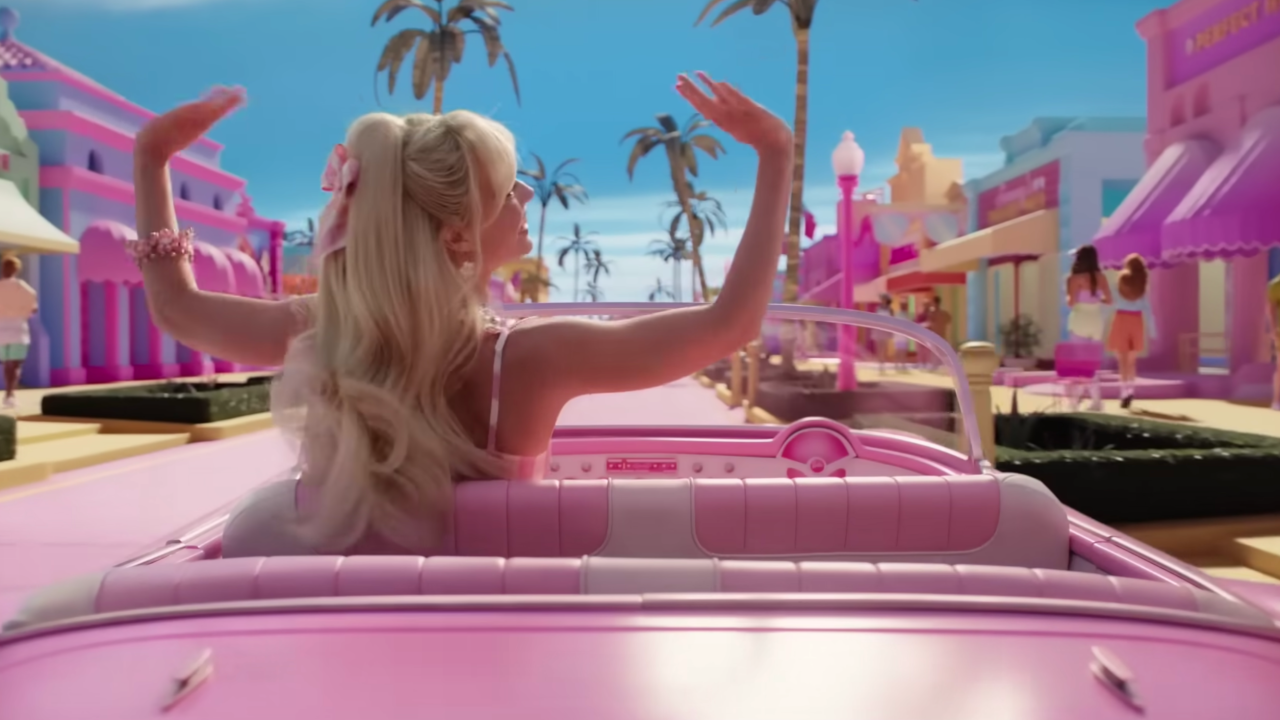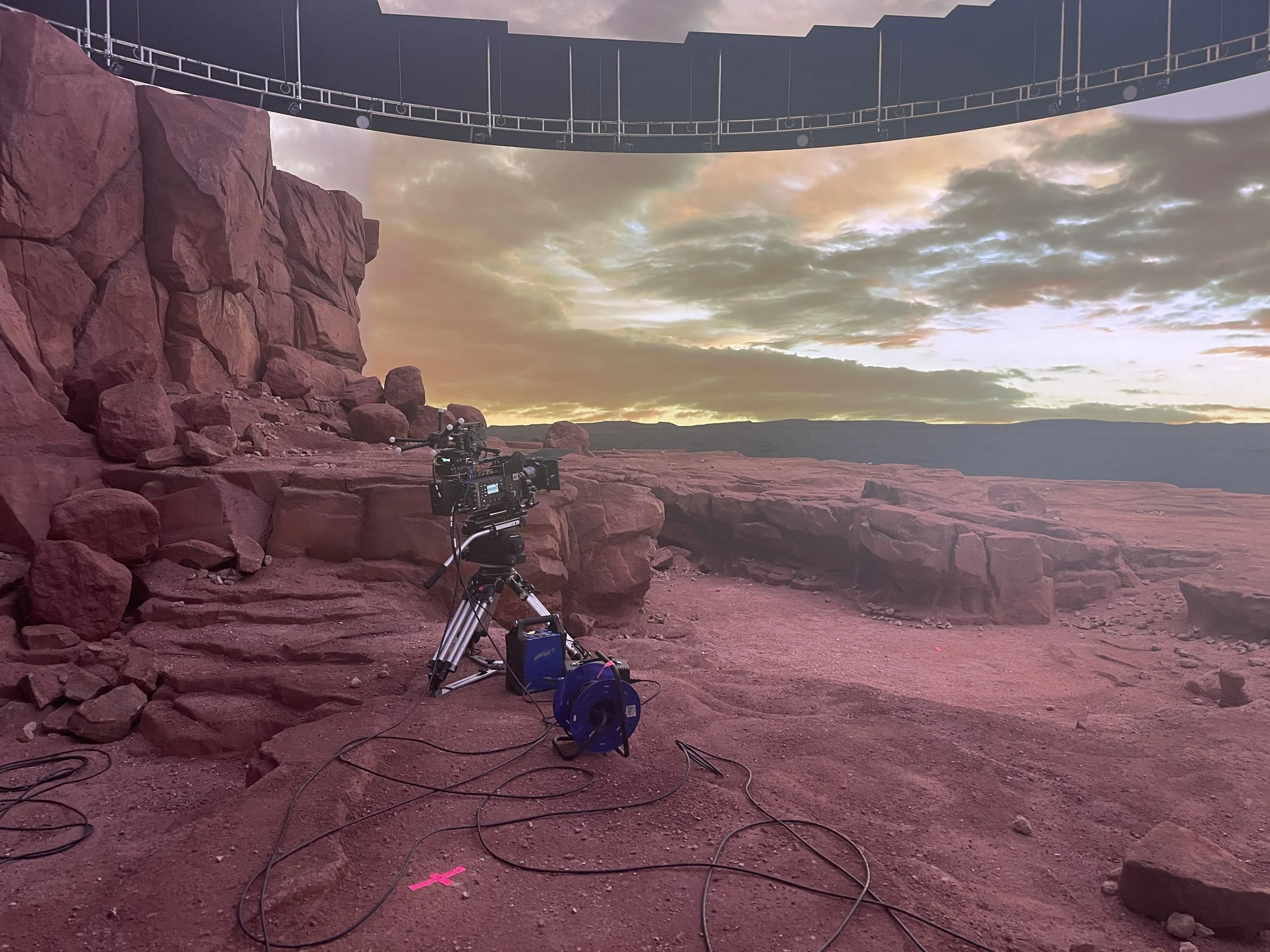Barbie
Barbie
Barbie was shot on Warner Bros. Studios Leavesden’s V Stage in the UK which Lux helped design, build, and operate using Unreal Engine. The film utilized four other soundstages at Leavesden and took advantage of the V Stage for car process scenes such as Barbie’s convertible in Barbie Land.
Lux provided virtual production services - including Engine, Systems, and Camera Tracking – for Barbie Land sequences and the film’s opening prologue that parodies 2001: A Space Odyssey.
Car process was used on the V Stage in scenes where Margot Robbie, as Barbie, is driving in her classic Barbie convertible. The vehicle was created to look like a life-size toy version of the car, to be realistic to the fantasy world Barbie comes from. Given the expansive scale of V Stage, a substantial track could be constructed for the camera to trace the path of the convertible.
"The extent of the track brilliantly illustrated Barbie's voyage through Barbie Land, enabling the viewer to fully comprehend the constructed world. Had we been confined to a smaller stage, the absence of space for a track would have made it impossible to achieve the same visual impact," Virtual Production Producer Kyle Olson explained.
“When you’re in the world of Barbie, you’re dealing with dream houses and fantastical lands,” says Olson. “If not for virtual production, these sequences would have been shot with green screen backgrounds, with the rest of Barbie Land added in post-production. Actors would rather see and respond to their setting instead of acting against a blue or green screen and imagining what could be there.”
Also, building Barbie’s world practically would have been difficult and costly, considering the limitations the real world offers to such a rich fantasy experience.
“It would have been very challenging and expensive to build Barbie’s entire world in real-life,” said Olson. “You’d be limited by the technologies, or the practicalities used in traditional filmmaking. Here, the production could lean into the true fantasy nature of the whole experience and integrate modern virtual production tools with computer software to create an immersive world for the actors to work in and the audience to enjoy.”
The film’s prologue, which also served as a teaser trailer seven months before the film’s release, proved to be a large undertaking. The concept was to put a twist on an iconic moment in film history from 2001: A Space Odyssey, where apes are idolizing a monolith, and remake it with little girls worshiping the first Barbie doll ever created.
“This trailer would have been tough to shoot in real life,” pointed out Olson. “Going to the desert with a full crew and equipment alone would have been difficult, much less bringing children. By being on a virtual production soundstage, production could control all the variables from the lighting, the temperature, the sound - all the things you would not be able to do if you were shooting out in the desert.”
With child labor laws allowing for limited hours a day for shooting, a practical environment can severely impact the amount of time a filmmaker has with a child actor while striving to get that perfect shot if weather conditions don’t agree. Humans and equipment can overheat, and wind can knock over equipment, all of which can test the patience of any person, let alone young kids, who can become frustrated, uncomfortable, and ultimately, uncooperative.
"Virtual Production provides the ideal conditions for projects like this," remarked Olson. "With the kids on a climate-regulated set, the desert backdrop becomes a tangible experience, which is significantly more interactive than a green screen, allowing them to react in a more natural manner. On a volume stage, there are fewer interruptions, making the process of capturing shots with young actors smoother and quicker. While it's challenging to predict and control children's actions, having control over the environment alleviates half of the struggle."
Additionally, with a production that features many A-list stars that often come with very tight schedules, finding the time to shoot additional promotional material can be tough to schedule.
"The challenge we faced was - how can we create a promo without requiring the actor to shift to a different set or travel to a real desert for several days," Olson articulated. "The immediate solution that came to mind was, let's film it on the V Stage, where we managed to complete this challenging sequence in a minimal amount of time.”



